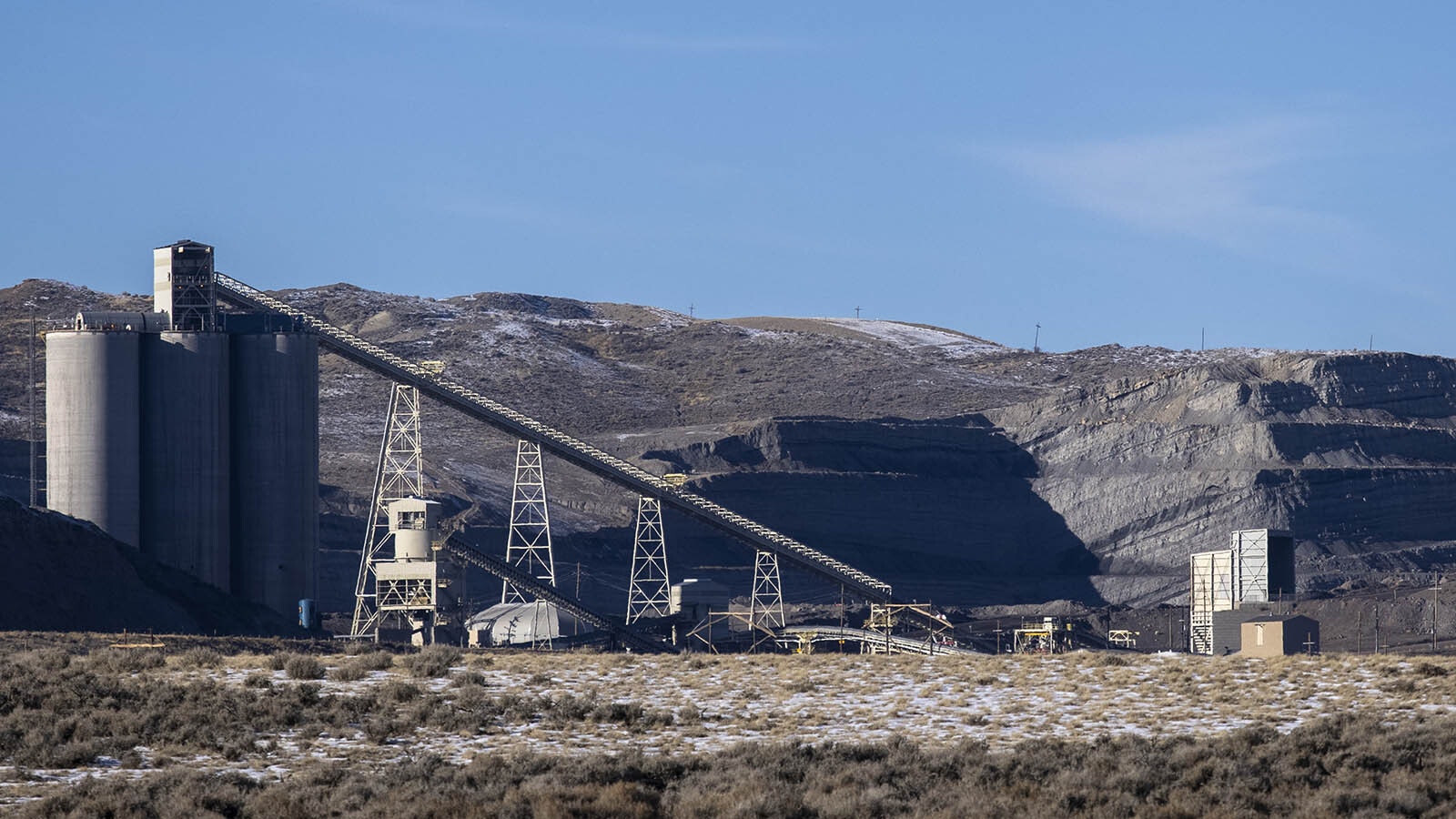It’s cold comfort for the 28 coal mine workers laid off last week by Kemmerer Operations LLC, but Wyoming coal industry watchers see evidence of an uptick in coal production and sales to electric utilities.
The job losses equal around 13% of the mine’s workforce and the reduction, according to a company press statement, “Is part of its ongoing efforts to align operations with current coal market conditions, including those caused by the pending natural gas conversions of several coal-fired power plants in the region.”
The company “appreciates the contributions and hard work of the impacted employees and values its longstanding partnership with the United Mine Workers of America,” continued the statement.
The Kemmerer Operations mine produced 2.4 million tons of coal in 2024 with a staff of 215 workers, according to federal data.
That 2.4 million tons contributed to roughly 190 million tons Wyoming producers sold last year. That was below an earlier projection from a November 2024 University of Wyoming report that forecasted 225 million tons of production in 2024.
It also was the first time since 1992 that annual coal production dropped below 200 million tons.
Now, said Travis Deti, executive director of the Wyoming Mining Association, there are signs production could increase.
“The utilities, it's their responsibility to dispatch the lowest priced fuel possible,” Deti told Cowboy State Daily. “And when gas prices go up, coal becomes a little bit more desirable. And so we're kind of seeing that right now.
“In Wyoming with our producers, we're seeing those contracts starting to come. The utilities are making those contracts right now to buy our coal. And that's a good thing.”

Emissions Are Up
Evidence of an increasing demand for Wyoming coal is reflected in a recent rise in carbon dioxide emissions.
Reuters reported Tuesday that U.S. power producers emitted more than 304 million metric tons of carbon dioxide (CO2) from power generation over the first two months of 2025.
“The emissions tally marked a 9% rise from the same period last year and was the first reading above 300 million tons in six years for the opening two months of the year,” reported Reuters. “Higher coal use and lower gas generation indicates that power producers would rather raise emissions than incur a financial hit from higher gas costs.”
On average, U.S. coal-fired power generation so far this year is 21% higher than on the same dates in 2024, according to LSEG data, a global provider of financial information.
Wyoming supplies about 40% of the coal used by coal-fired power plants in the U.S., primarily from the Powder River Basin.
What It Means For Wyoming
While orders are coming in for Powder River Basin (PRB) coal from coal-burning utility companies around the country, the weather and unpredictable economics of gas and coal paint an uncertain picture about what’s next for Wyoming coal.
“Broadly speaking, a good share of these power plants use PRB coal,” Rob Godby, economics professor at the University of Wyoming, told Cowboy State Daily Wednesday.
Explaining the rise in coal-fired electricity this past winter, Godby said power plants nationwide turned to coal because they had plenty to burn.
“Power plants went into this winter with near-record levels of coal stockpiles already delivered,” said Godby. “So, this made using coal instead of gas especially attractive since that coal was already paid for.
“In the past couple of weeks, coal production has increased and that may be due to the additional generation demand we are seeing.”
If the coal industry faces market headwinds this spring and summer, they may come from a drop in gas prices, said Godby.
“If they fall back even to levels we saw last fall, which were about 10% to 30% above what we have seen the past two years, we are likely to see switching back to more gas-fired generation,” he said.
Adding to the unpredictability of the coal and natural gas markets is the influence of weather.
“While there has been increased use of coal nationwide this winter, we are waiting to see whether it will convert into increased production on a sustained basis in Wyoming,” said Godby. “Early signs are that it may, but whether the increase is sustained depends on whether spring takes its time returning to the United States thus keeping gas prices higher, and whether coal plants will want to replenish their stockpiles.”
David Madison can be reached at david@cowboystatedaily.com.





